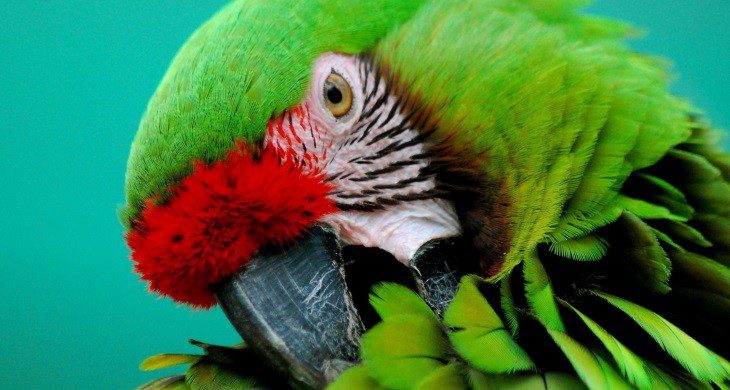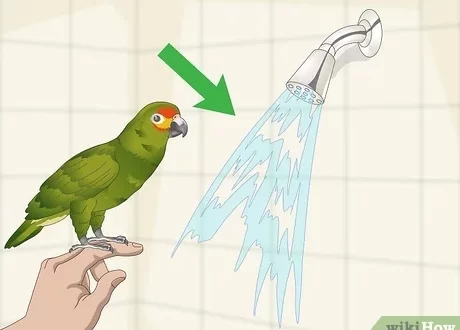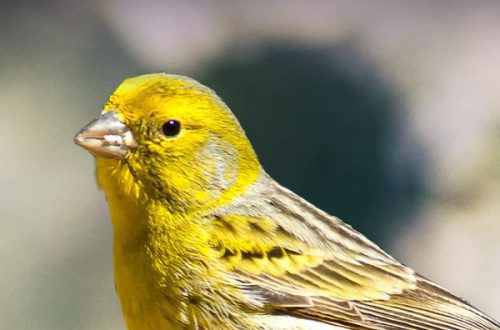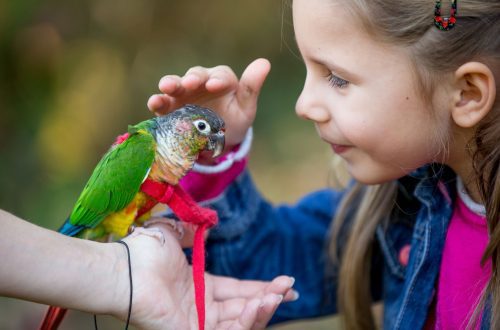
Parasites in parrots
Parasites in parrots – one of the problems that owners of these birds may face. After all, parrots, like other pets, can suffer from parasites. Parasites living on the body of a living organism, including a parrot, are called ectoparasites. And, unfortunately, domestic feathered pets are no exception to this. Most often, the symptoms of diseases appear with a decrease in immunity and stress.

Contents
The scabies mite is the most common parasite in parrots.
The most common disease associated with ectoparasites in budgerigars and some other parrots is knemidokoptosis (scabies mite). Most often, open areas of the skin devoid of feathers are affected – the cere, beak, paws, eyelids and cloaca area. Ticks of the genus Knemidocoptes gnaw holes in the skin, causing unbearable itching and stress to the bird. Sometimes areas of the skin under the feathers are affected and the parrot may begin to gnaw the covers to the blood or begin to pluck.
Symptoms of infection of a parrot with a parasite scabies mite
Unfortunately, the symptoms are noticeable already in the initial stages of the lesion – whitish porous growths appear. Over time, the beak is deformed, the bird may lose the phalanges of the fingers. The diagnosis is made on the basis of taking tests (scrapings).
Parrot treatment for scabies mite
The treatment of this disease is quite simple and in the initial stages is not long. The affected bird must be isolated from others; in the cage and places where the bird spent time outside the cage, disinfection should be carried out using acaricidal preparations. Aversectin ointment, which can be purchased at a veterinary pharmacy, has proven itself to be a very effective drug. The ointment is gently applied to the affected areas once every five days until the symptoms disappear. You can also use vaseline oil, which is sold in a regular pharmacy. However, treatment with this drug will be long, since the bird needs to be treated every day and the oil is not so effective. It should be noted that the parrot should be handled carefully, avoiding feathers and eyes. There are other treatments as well. During treatment, it is necessary to increase the immunity of the pet. You can use synthetic vitamins, diversify the diet, increase the length of daylight hours.
How to treat a cage when a parrot is infected with a scabies mite parasite
Remove wooden objects from the cage, as mites can remain in the wood and infect the bird again. Perches must be installed plastic for the duration of the treatment. The bird should not be released from the cage until all symptoms have disappeared.
Downy parasites in a parrot
Another parasitic disease in parrots is called mallophagosis (downy eaters). It is caused by parasites of the genus Mallophaga that feed on skin scales, blood, lymph, and also gnaw through feathers.
Symptoms of infection of a parrot with parasites
The bird is very nervous, constantly itches, there are lesions of feathers in the form of stitches. Due to itching, the parrot may also begin to peck at the skin and pluck. Infection occurs through contact with a sick bird. Diagnosis is based on examination of affected feathers.
Treatment of infection of a parrot with parasites
Treatment should be carried out with insecticidal preparations. Sick birds must be isolated and the cage treated. To prevent this disease, it is necessary to impose high hygiene requirements, keep newly acquired birds separately in quarantine, and avoid contact with wild birds.
Parasite mites in a parrot
Syringophelosis is caused by the parasitic mite Syringophilus bipectinatus. Parasites live in the auricles of bird feathers, penetrating there through a hole in the base of the feather. These mites feed on lymph and exudate. Therefore, most often only grown feathers are affected. The incubation period lasts about 3 months. Infection occurs through contact with a sick bird, from parents to chicks, through bedding and inventory.
Symptoms of infection of a parrot with a parasite
Symptoms of damage can be seen even in chicks that have not yet left the nest. Most often, large feathers (primaries and tails) break off in infected birds, then the newly grown feather is deformed, dark contents can be seen in the eye, the feather becomes brittle, dull. The bird is itchy and may begin to pluck itself, losing weight. The diagnosis is made by a veterinarian based on analyzes of the contents of the quill of the pen.
Treatment of infection of a parrot with a parasite
Treatment with acaricidal preparations is prescribed by a veterinarian, since some of the agents are very toxic to birds. Unfortunately, the treatment is quite long, as you will have to wait until all the affected feathers have shed. Together with local treatment, the lost immunity of the bird should also be replenished with vitamins and the right content.
Parasites gamasid mites in a parrot
These tiny parasites are especially annoying to birds that build their nests in burrows, hollows, or build closed nests. Parrots also have these parasites, especially those in contact with wild birds. You can also bring them from the street along with branches or other natural material. Ticks are carried by the wind, having previously fixed themselves on light motes. Sometimes incubating females, with abundant reproduction of ticks, leave their masonry and leave the hollow infested with parasites. There are almost always pockets of ticks in the attics, where rock pigeons constantly nest. The most famous are red bird mites. Unlike lice, gamasid mites do not have active means of movement. But they can go without food for a long time (more than a year). Incubating females and chicks sitting in nests most often suffer from ticks. During the daytime, ticks usually hide in bedding and other secluded dark places. From time to time, ticks crawl on a bird and, biting into the skin, suck blood. Some red mites burrow into the eyelids and nostrils of birds.
Symptoms of infection with parasites by gamose mites in a parrot
In a bird, weight loss occurs, egg production decreases, oppression, skin itching, and feather pulling are observed. Perhaps the development of dermatitis. Constant blood loss, even with a small number of ticks, can be fatal for chicks. Ticks moving quickly through the body, sucking blood, turn red. The color of the mites varies depending on the degree of assimilation and the stage of digestion of the blood from red, dark red, dark brown to grayish white. Diagnosis is made on the basis of history, clinical signs and laboratory research.
Treatment of parasite infestation with gamasid mites in a parrot
The treatment of infected birds is carried out using the same means as for the fight against lice: acaricidal drugs prescribed by a veterinarian. An effective way to kill ticks is to treat infected items with hot water.
How to Prevent Parasite Infestation in a Parrot
As with other pets, parasite infestation can be prevented by practicing good hygiene and quarantine all new birds. Everything brought from the street must be carefully handled and avoid contact with wild birds. These simple preventive measures will allow you to keep your feathered friend healthy.





